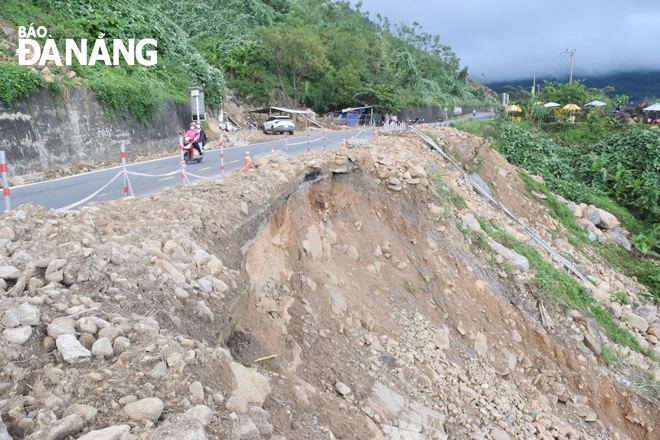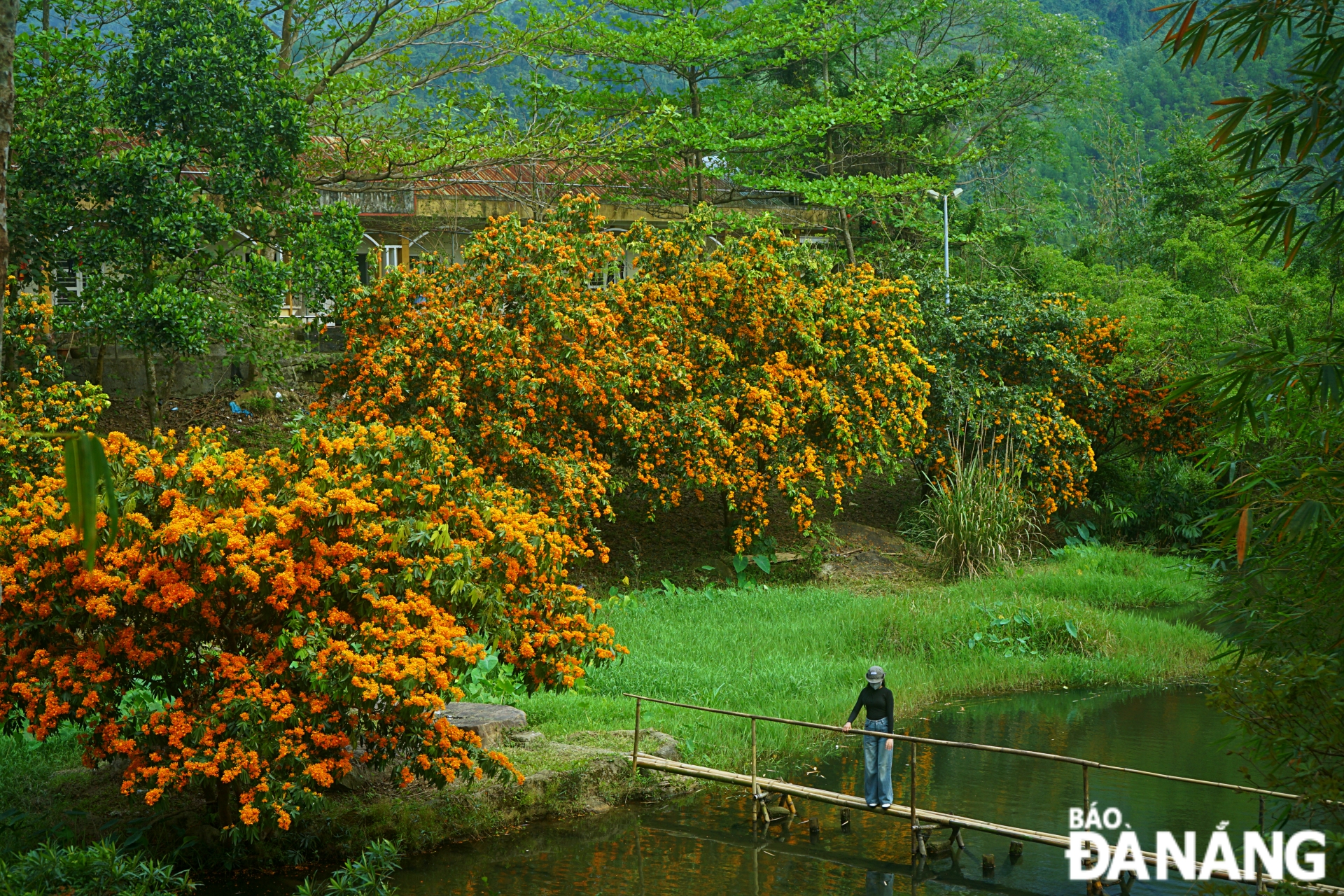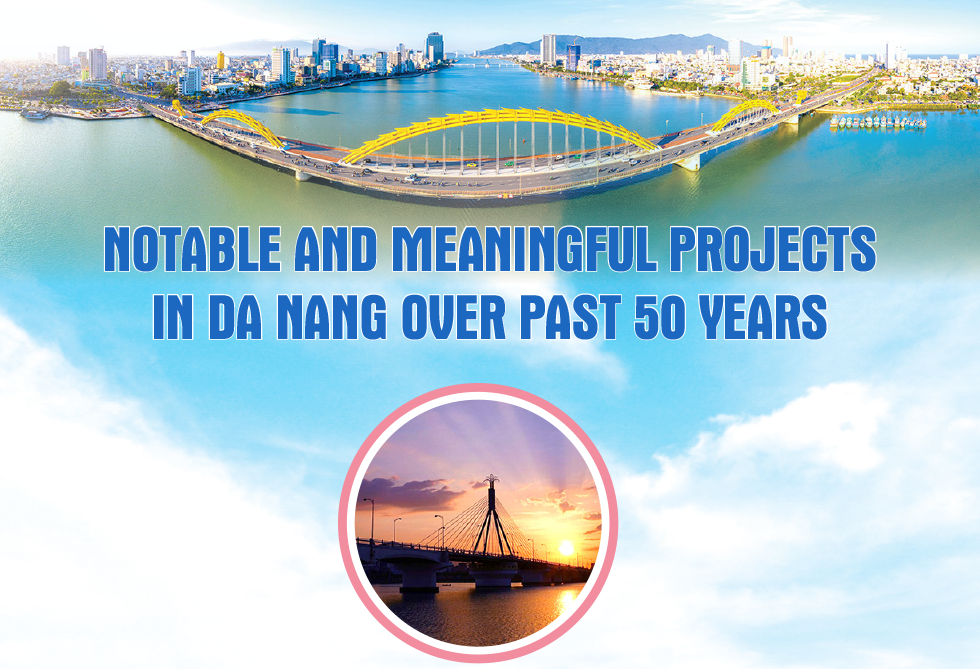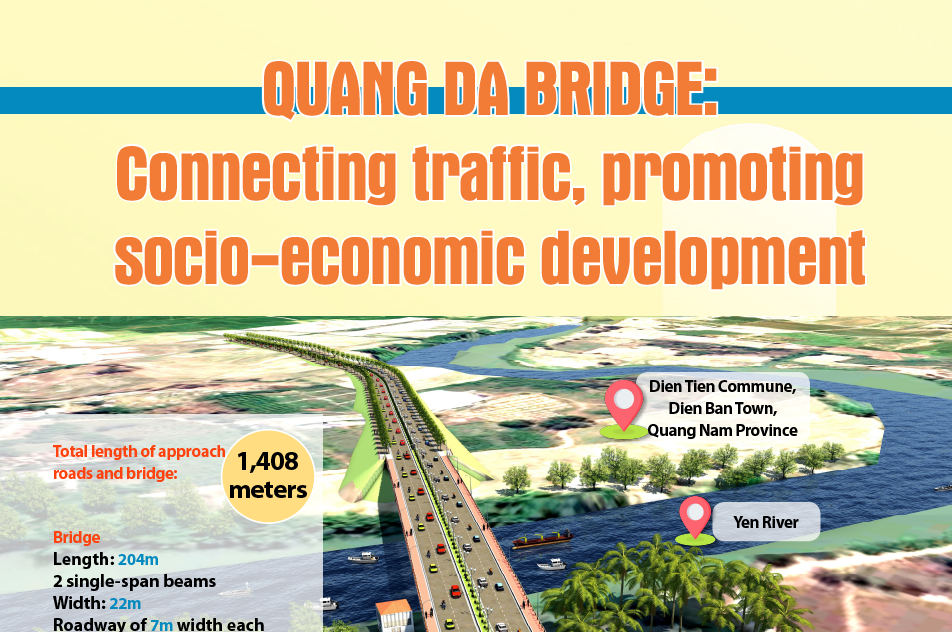Proactive response to unusual natural events in Da Nang needed
The total rainfall measured in the Son Tra Peninsula, Hoa Phu and Hoa Bac communes of Hoa Vang District from early 2022 until December 12 was much higher than in 2020 and 2021, and surpassed 22%-34% compared to the historical record of 1964 that occurred the worst flooding in the city’s history. In Viet Nam’s history, the year 1964 has from that time to present been known as ‘The Catastrophe in the Year of the Dragon’ or ‘The Catastrophic Flooding in the Year of the Dragon’. December 15 is considered the last day of the rainy and stormy season in Da Nang and Quang Nam Province. However, new or stronger extreme events have happened over recent years due to climate change, including extreme heavy rain, extremely cold and hot temperatures, requiring Da Nang to take more proactive measures to mitigate the impact of natural hazards.
 |
| Extreme downpours caused serious landslides at the Hai Van Pass. Photo: HOANG HIEP |
Enhancing preparedness and early action to minimize the impact of disasters
In 2022, many unusual natural events occurred in Da Nang. Very unusual heavy rain hit the city in early April amidst the dry season in the Central Viet Nam, resulting in flooding in many roads and residential areas. In addition, extreme downpours caused flood peaks for Yen, Tuy Loan and Cu De rivers. As a result, river flooding isolated Loc My Village nestled in Hoa Bac Commune, and damaged 941.4 ha of paddy and 243.8ha of vegetables.
On September 27 and 28, Da Nang was directly affected by the devastation wreaked by typhoon Noru which became one of the most powerful storms recorded in Viet Nam over the past 20 years. Noru caused heavy damage to properties of local people and public infrastructure, as well as triggered sea level rise with about 6cm higher than storm surge levels caused by Typhoon Xangsane hitting the city on October 2006. Typhoon Noru along with historic floods occurred in the city from October 9 -11 due to heavy rains caused estimated VND 50 billion in damages and losses.
In particular, extreme downpours which lashed the city on October 14 caused widespread flooding across 52 out of 56 wards and communes, along with flash floods and landslides in many parts. In addition, floods triggered by torrential rains killed 4 people and caused a lot of damage to properties of local people and public infrastructure across the city, seriously affecting daily life of local residents and production activities in the city with total economic losses of about VND 1,500 billion.
Mrs Doan Thi Tuyet Nga, the Director of the Department of Science, Technology and International Cooperation under the Vietnam National Disaster Management Authority (VNDMA) stated that extreme weather events such as heat waves and large storms, flash floods, landslides, droughts are likely to become more frequent or more intense with climate change. Severe flooding triggered by the historical extreme rainfall event which occurred in Da Nang on October 14 is a typical example. Therefore, Mrs. Nga highlighted the need for enhanced preparedness and early action to mitigate the impact of disasters. The focus should be preparing disaster supplies and material resources, including search and rescue equipment, as well as building capacities in preparedness to improve the ability of organizations and individuals across the city to respond to disasters in a bid to reduce disaster risk.
Assoc. Prof.Dr. Vo Van Minh from the University of Da Nang said that Da Nang faced a low risk of deep and prolonged floods on a large scale due to its natural topography. However, the city is now at higher risk of flooding that is becoming more dangerous and more costly to manage in the context of global climate change causing unpredictable extreme weather events. The decline of watershed forests, dense construction works and ineffective operation of the drainage system are big challenges facing the city. Therefore, Mr Minh stressed the need for the city to create proper urban planning to boost its socio-economic development, as well as effectively manage local rivers and lakes to maintain a balance in the nature in order to ensure the safety of the people and the sustainable development of the city.
Assoc. Prof.Dr. Vo Van Minh highlighted the importance of protecting watershed forests, including Son Tra and Nam Hai Van forests along with the vegetation in the mountains in Hoa Vang District in reducing the potential for damage by natural hazards. Heed should be paid to raising public awareness about environmental protection and disaster risk reduction. High priority should be given to increasing vegetation coverage in a bid to absorb ground water, clean our air, and regulate our climate.
Towards sustainable development of the city
According to the Da Nang Steering Committee for Natural Disaster Prevention and Control, Search, Rescue and Civil Defence, impact analysis on severe flooding triggered by the historical extreme rainfall event which occurred in Da Nang on October 14 has included in the draft project on building a safe and resilient Da Nang to natural hazards towards 2030, and the project will be submitted to the Prime Minister for approval.
Director of the Municipal Department of Construction Phung Phu Phong underlined the necessity of expanding flood drainage corridors, strengthening regulation lakes to increase water storage capacity, creating green corridors and increasing green areas in an attempt to reduce urban flood risk.
In its efforts to provide a secure supply of water for homes and businesses across the city during the dry season next year, the Municipal Department of Construction is urging relevant agencies to put the Hoa Lien Water Supply Plant into operation as soon as possible, as well as accelerate a project to raise the daily capacity of the An Trach Anti-Salinity Pumping Station from 210,000m3 to 420,000m3.
Former Deputy Director of the Municipal Department of Agriculture and Rural Development Huynh Van Thang stated that climate change causes sea level rise and poses salinization threats to water resources on the Cam Le River, thereby asking the city to build a pumping station and install pipelines to source water from the Thu Bon River in Dai Hoa Commune, Dai Loc District, Quang Nam Province to Da Nang in order to ensure safe and sustainable water sources for the city in the future.
Reporting by HOANG HIEP – Translating by H.L








